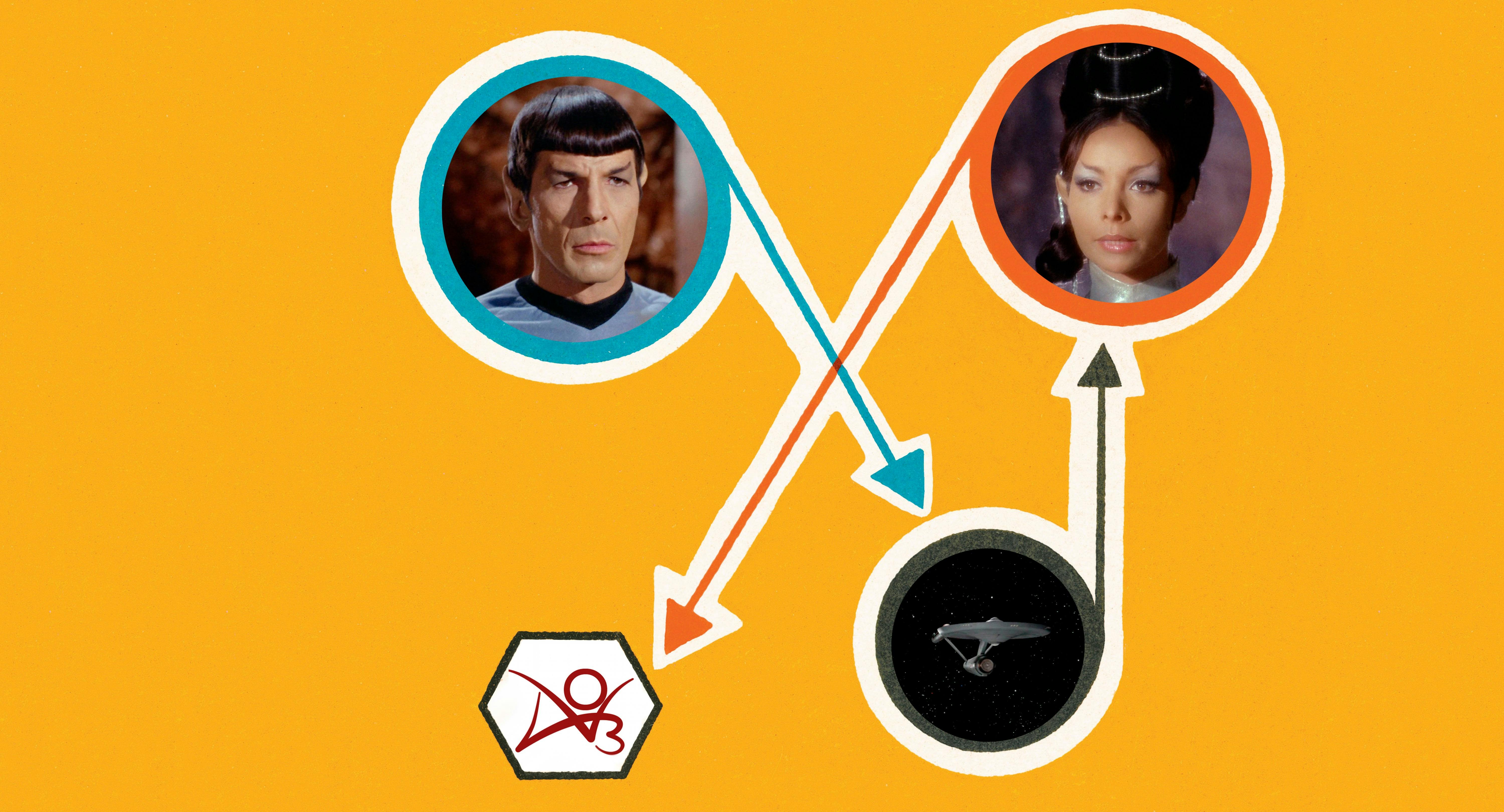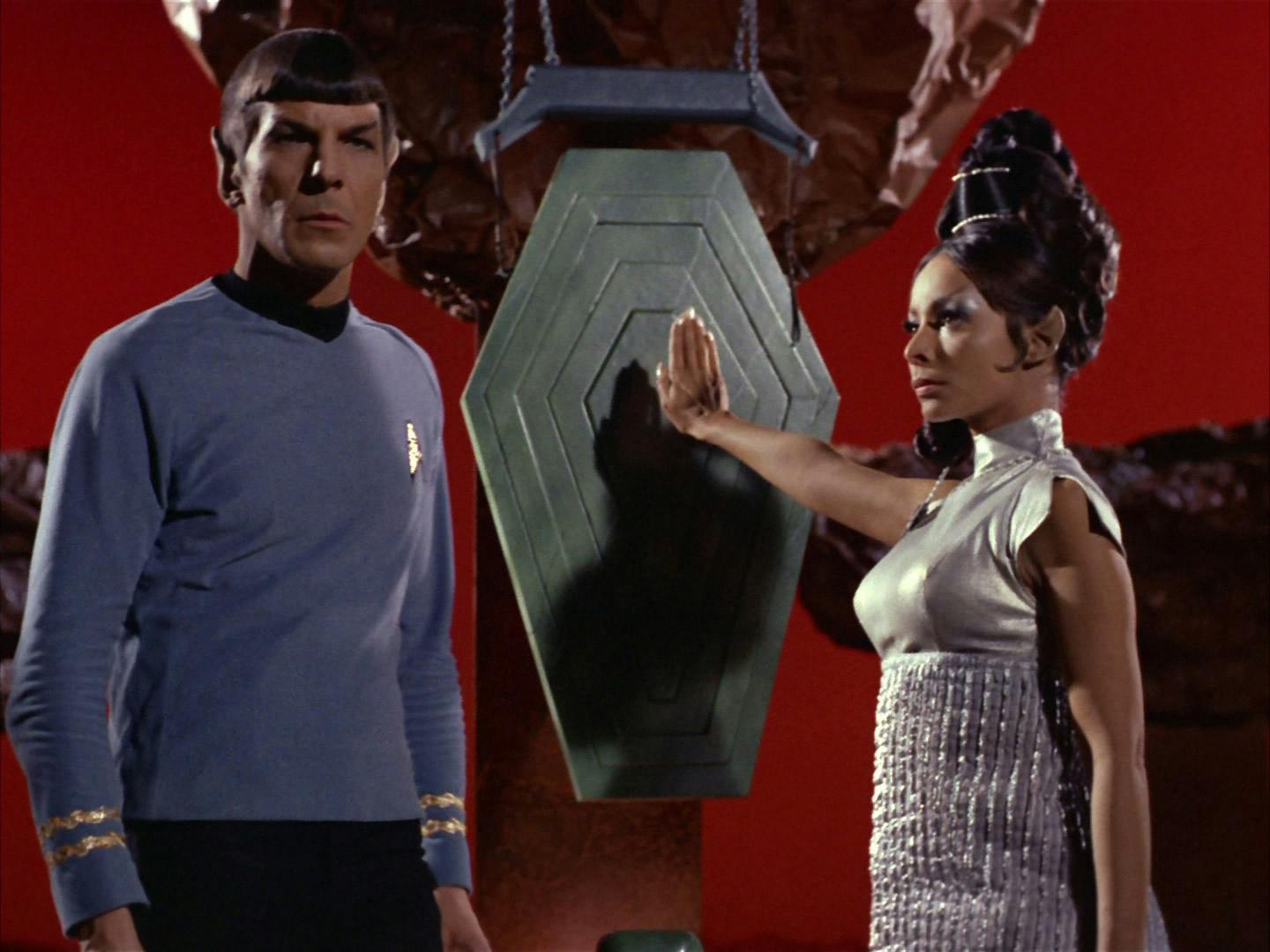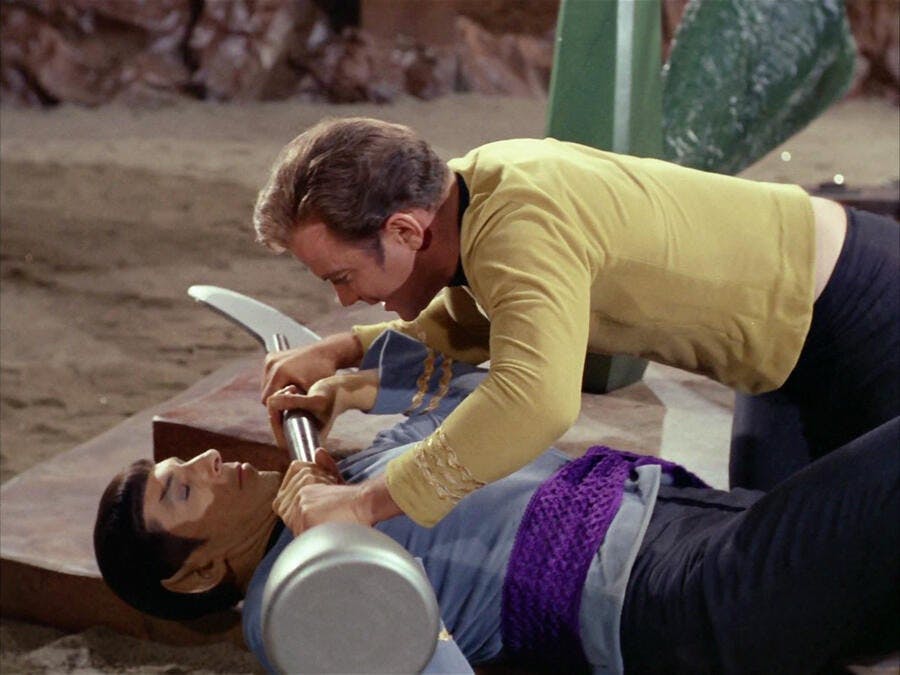Published Sep 15, 2023
The Enduring Legacy of 'Amok Time'
After pon farr, fandom was never the same.

StarTrek.com
Star Trek Day (September 8) is just the first of many milestones Star Trek celebrates each fall.
Anniversaries pepper the months of September and October, including this year’s 56th birthday of “” — an episode that marked many important “firsts” in Star Trek history. ’ second-season classic is the first (and last) TOS episode to take place on Vulcan, as well as the first to feature Chekov at the helm, the first episode to feature the iconic Vulcan salute, and the first to credit DeForest Kelly in the title sequence.
However, there’s one aspect of "Amok Time" that resulted in not only one of the most well-known tropes in Star Trek history, but also in the genre of science fiction itself.

"Amok Time"
StarTrek.com
The legendary episode follows a simple premise — due to a previously unmentioned quirk of Vulcan biology called pon farr, Spock must return to his home planet to mate, or face a painful death.
Though many Trek fans are familiar with the concept by now (after all, pon farr makes an appearance in virtually every series featuring a Vulcan crew member), it was a fairly groundbreaking idea at the time, and one that somehow ended up sparking decades worth of interpretations, recreations, fanworks, and mainstream copies. Though it may not have seemed so for 1960s viewers, "Amok Time" would go on to become one of Star Trek’s most unconventionally influential episodes.

"Amok Time"
StarTrek.com
When it was first broadcast, "Amok Time" was one of the few episodes that offered insight into the personal life and background of Spock. This was an alluring concept to fans who, until then, only knew him as the stoic and ever-so-logical alien counterpart to Kirk. Maybe it’s this sense of intrigue and drama that drew many to the idea of the “mate or die” trope — the notion that such a buttoned-up, previously quiet character would suddenly be reduced to such a basic and uncontrollable urge. Intrigued fans took pon farr and ran with it, quickly making it their own.
One popular fanwork site, Archive of Our Own, hosts 1,500+ works featuring the “mate or die” trope, many of which center around Star Trek characters. However, the explosion in the trope’s popularity means that it’s present not only in Trek fanworks, but also a staple of fan writing. In "Amok Time," the concept of pon farr is used more as an illustration of Spock’s alien nature than anything else, but to many fans, it represented a very appealing way to have two characters get together.
Star Trek - Kirk & Spock Fight to the Death
It’s also worth noting that this departure from the original concept doesn't just pertain to fanworks. Many Trek shows, which have featured pon farr, have leaned much more heavily into the relational aspect of the condition rather than the forcible return to Vulcan as seen in "Amok Time."
, , and all featured pon farr, yet none of them saw the characters returning to Vulcan, instead focusing on the incapacitated state of the characters themselves. The popularity of the “mate or die” trope likely spread outside of Trek fanworks and into fan writing as a whole because it’s a very appealing and easy-to-explain way for characters who have no romantic interest in each other to suddenly begin a physical relationship.
Instead of using pon farr as a way to force a revelation about the background of a character (like Spock’s return to Vulcan), the majority of fanworks featuring the “mate or die” trope use it as a way to spark a physical connection between characters they think have chemistry. It’s no secret that Trek fans popularized the writing of fanfiction as we know it today, and much of that credit can be given to the fact that Star Trek not only had very ‘shippable’ characters, but also came up with scenarios in which the aforementioned characters could conceivably get together. Essentially, pon farr created a way for fans to give believability to what might otherwise be deemed “wish fulfillment.” Of the 1,500 and counting fanworks, stories can be found featuring characters all across science fiction and fantasy television - from Supernatural to Teen Wolf to the MCU.

A sampling of works influenced by pon farr on Ao3
StarTrek.com
However, it’s not just fan writers who have made use of the trope; it’s also spread into mainstream film and television, albeit in various interpretations and iterations. A script for an episode of Red Dwarf saw the character Cat go through an ordeal where he was forced to breed or die. An episode of Skins featured a far more questionable use of the trope when Effy is forced to sleep with Tony or die of a heroin overdose. The movie Crank saw Jason Statham's character forced to keep his adrenaline up or face death, and one of the ways in which he does so is by having sex. Though not all of the examples may be as specific as “alien physiology forcing a mating cycle,” the concept of getting intimate or dying has become a familiar trope in storytelling — not just in sci-fi, but in film and television as a whole.
While "Amok Time" may be remembered by Star Trek fans for a number of other reasons, its lasting impact on fanworks, science fiction, and pop culture as a whole is undeniable, whether it was purposeful or not. Star Trek’s legacy is so vast and unquantifiable that it can be easy to forget just how much influence it has had on pop culture, but in this instance, "Amok Time" and pon farr has played a very clear (and unique) role.
So, when September 15 rolls around every year, take time out of your day to sit down and rewatch "Amok Time" — not only to revisit a classic staple of the original Star Trek series, but also to remind yourself of how influential Star Trek can really be.
Steamy Star Trek Moments That Made Us Fall In Love





